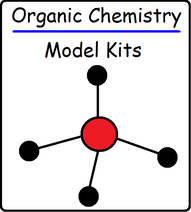|
What Is an Ionic Bond?
An ionic bond is a type of chemical bond that hold cations (positive charged ions) and anions (negatively charged ions) together. The electrostatic force of attraction is responsible for holding the ions together. Many ionic bonds are created when metals and nonmetals react with each other forming ionic compounds such as NaCl, KI, MgO, and CaS. In such cases, a transfer of electrons occurs to create an ionic compound. When Sodium reacts with Chlorine, the Sodium metal atom gives up an electron to form the Na+ cation. The Nonmetallic Chlorine atom receives the electron turning into the Cl- anion. The Na+ cation and Cl- anion are now attracted to each other by electrostatic forces which creates the ionic bond between them. It's important to note that ionic compounds can be created without the use of metals as in the case of NH4NO3. What is a Covalent Bond? A covalent bond is a type of chemical bond that hold atoms together by the sharing of electrons. Covalent bonds are formed when two nonmetals react with each other. Examples of covalent compounds include H2O, CO2, N2, and SO3. There are two types of covalent bonds that you want to be familar with - polar covalent bonds and nonpolar covalent bonds. A polar covalent bond results from the unequal sharing of electrons by two atoms. A nonpolar covalent bond results from the equal sharing of electrons. The chemical bond connecting H-H is a nonpolar covalent bond because the two hydrogen atoms share the electrons equally since they have the same electronegativity. The chemical bond in Carbon Monoxide (CO) is a polar covalent bond because the electrons are shared unequally since the two atoms have significantly different electronegativity values. Carbon has an electronegativity value of 2.5 and Oxygen has an electronegativity value of 3.5. If the Electronegativity difference is 0.5 or more, the bond is considered to a be a polar covalent bond. If it's 0.4 or less, it's considered to be a nonpolar covalent bond. In Methane (CH4), the C-H bond is considered to be a nonpolar covalent bond even though it's composed of two different atoms with two different electronegativity values. The electronegativity value of Carbon is 2.5 and it's 2.1 for Hydrogen. With an electronegativity difference of 0.4, the bond is considered to be a nonpolar covalent bond. Video Playlists and Final Exam Videos: www.video-tutor.net/ |



